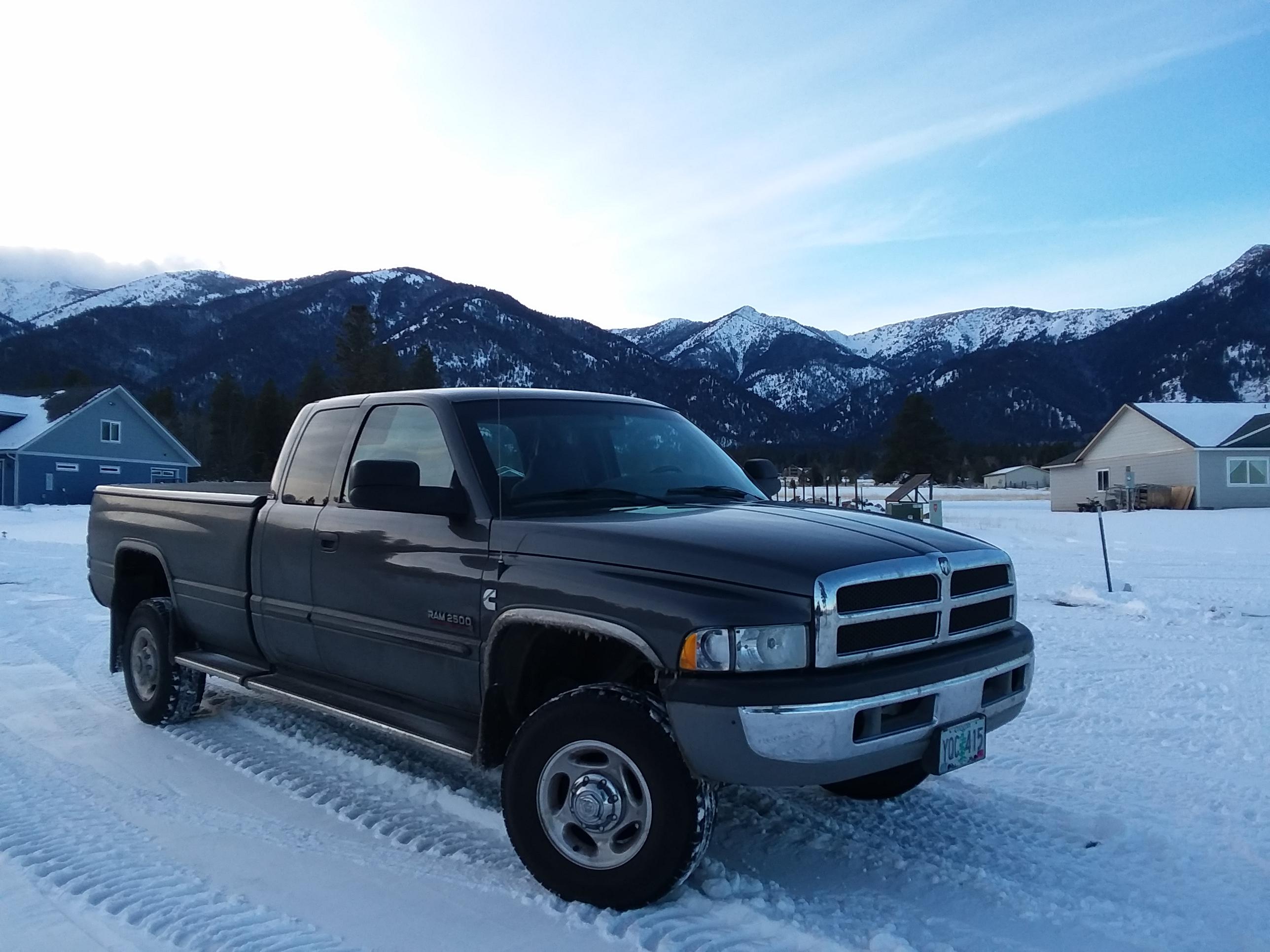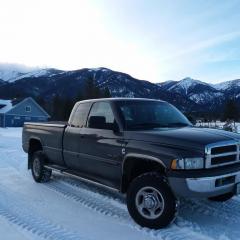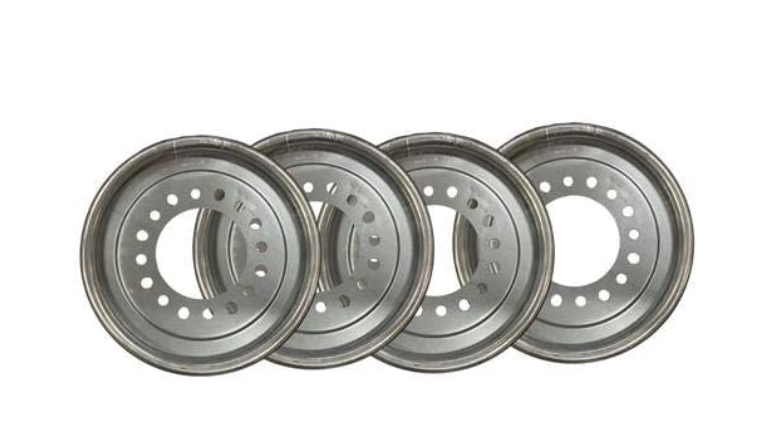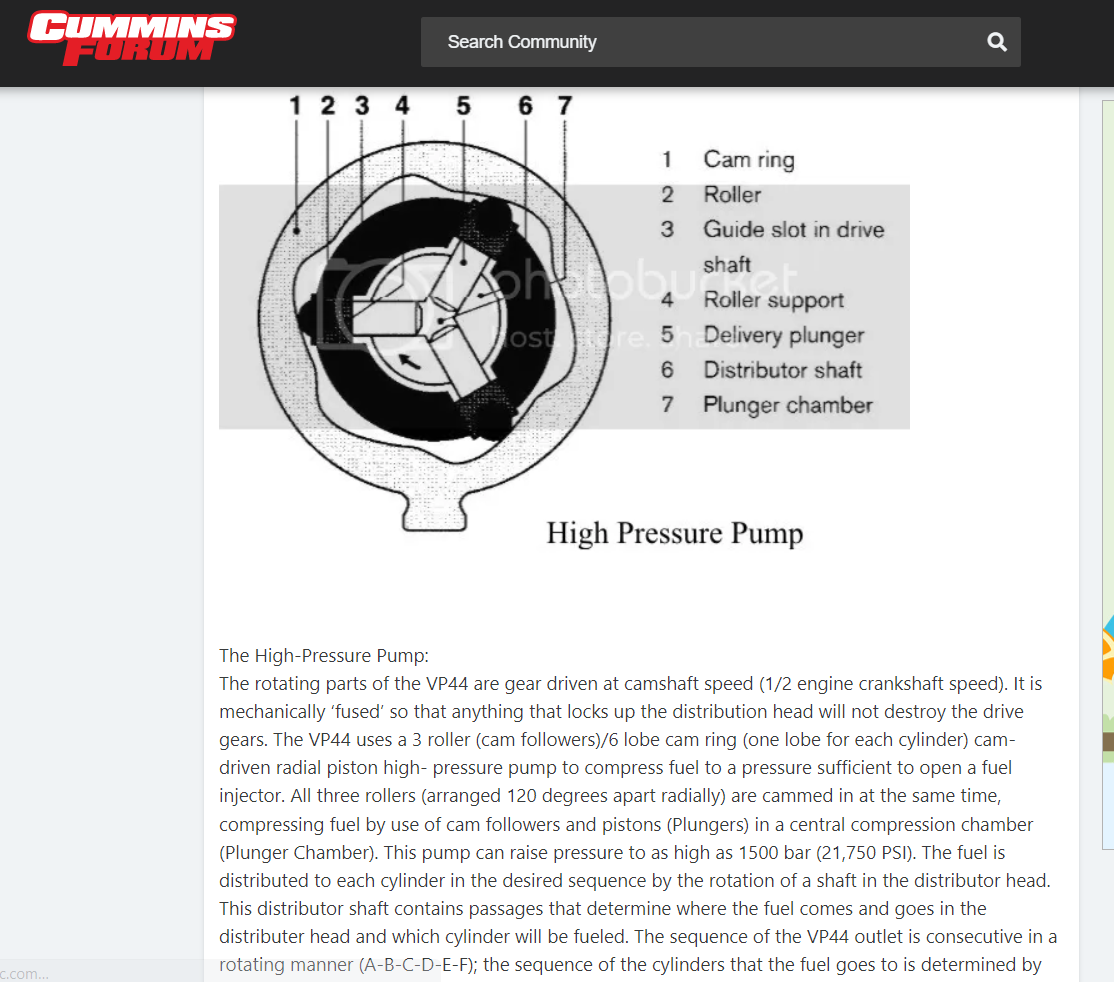
Everything posted by Tractorman
-
Squeak/Screech noise in reverse only
@Andyba20, It is very unfortunate to have those repairs done so poorly on your truck. I am sure this is why so many who seek information from this forum are very leery of dropping off their truck to a repair shop. If your drums are in good condition (not heat cracked or out of round and are within diameter specs), you could probably just emery cloth them and install new shoes. Whichever way you go, the last thing to do before installing the brake drum is to use liberal amounts of Brakleen and a shop towel to clean the shoes and drums of any handling contamination. - John
-
Squeak/Screech noise in reverse only
You will have improved braking. If all of the shops performed excellent work, this forum wouldn't exist. Drum brakes have been on the way out for a number of years. When that happens, usually knowledge goes away with it. Here is a good story. After a couple of years working as a fleet maintenance mechanic for Copper Mountain Ski Resort in Colorado, I was promoted to shop foreman. We maintained a fairly large fleet - a dozen snowcats, heavy equipment, about 50 trucks and vans, golf course equipment, transportation equipment, etc. About a year before I started working there as a mechanic, the landscaping crew had purchased a 3 axle 10,000 lb GVWR equipment trailer. Apparently, from the day it was purchased, the electric trailer brakes never worked right. Over the course of a year the trailer was sent back to the manufacturer several times in an attempt to get the problem resolved. Well, it never happened. I saw other mechanics trying to figure it out from time to time, but without success. So, finally the landscaping crew gave up complaining about it and used it without trailer brakes. When I became the shop foreman, I asked my boss if I could bring that trailer into the shop and find out what is wrong with it and then fix it. He gave m the go ahead. So, I brought it into the shop and had all wheels and drums removed to expose the brake hardware. I offered every mechanic an opportunity to figure out the problem. But, I also said that nothing could be disassembled until the problem was resolved. I told them that I thought whatever is wrong with the braking system is going be simple and fundamental, and left them with that. Throughout the rest of the day, I had conversations with several mechanics about the problem, but after each discussion we would rule out that possible solution. The next morning with a fresh cup of coffee in my hand, I looked at the brakes on both sides of the trailer. I began to chuckle. The problem was obvious, but I didn't notice it the day before and I had looked at it several times, myself. I let all of the mechanics know this information and I gave them two hours to figure it out. No one did, so I gave a hint. I said, "Remember one time awhile back when a mechanic said that when does a brake job, he leaves one side assembled so that he has a reference in case something goes wrong? And at the time I made a remark 'what if the referenced side is assembled incorrectly?'" There was silence for a moment and one mechanic piped up and said, " The axles are on backwards". He was correct. All three axles installed incorrectly by the manufacturer. Needless to say, we switched the axles around, put on some new brake hardware, and lo and behold, the trailer brakes worked great! Made some people happy in the landscaping department. - John
-
Squeak/Screech noise in reverse only
Thanks @SVALIN. I was just trying to visibly see that there is more brake lining on the secondary shoe. It appears that is the case. The brake shoes should be the same size, but the brake lining should cover more area on the secondary shoe. There can be brake lining thickness differences and material type differences, too. Usually, the primary shoe would have the thicker lining than and cover less area than the secondary shoe lining. It will interesting to see what the other side looks like. - John
-
Squeak/Screech noise in reverse only
@SVALIN, would it be possible for you to post a photo that would show the bottom of both brake shoes? That way we could see the difference of the primary and secondary shoe. - John
-
Lift pump shuts off after engine starts
You are performing some good troubleshooting here - you are definitely on the right track. It sounds as if you still have the OEM lift pump circuit. If that is the case, the ECM provides power to the lift pump with two circuits - one for engine start and one for engine run. The ECM is carrying the full electrical current load for the lift pump - not the best design. If this is your problem, relaying the lift pump using the ECM to provide power to the relay coil would be a good solution as long as the ECM is still performing properly. This modification would reduce the electrical load on ECM lift pump circuit considerably. In the worst case scenario (ECM no longer supplying power to lift pump) you could use a switched circuit in series with an engine oil pressure switch that would supply power to the coil of a relay for the lift pump. This would accommodate the "in case of an accident" feature. If you are referring to the relay in the PDC, this relay is for the fuel control solenoid inside the VP44 injection pump. It has no affect on the lift pump circuit. - John
-
Squeak/Screech noise in reverse only
With the information that you have provided, I recommend to take the other side apart for inspection. This way you can replace what you need, but most importantly, you can adjust the service brake and parking brake properly. You can verify that all of the parts are assembled correctly, as well. One important part of drum service brake adjustment is specifically observing that both primary and secondary brake shoes are seated against the anchor pin on each side of the vehicle before adjustment. Here is what can happen. A mechanic installs the primary and secondary shoes and hardware on the left side. He ensures that the shoes are seated against the anchor pin and installs the brake drum. He goes to the right side and installs the brake shoes and hardware. He notices that both shoes have not come up against the anchor pin, so he pushes them against the anchor pin. He believes all is well..., but maybe not. What can happen (and many times does) is that when he pushes the brake shoes against the anchor pin on the right side, the energy from that action transfers through the equalizer in the park brake circuit to the park brake actuator on the left side. Consequently, the primary (forward) shoe is pushed away from the anchor pin on the left side. This will result in improper service brake adjustment and improper park brake adjustment. The usual cause of the above-mentioned issue is someone (during the life of owning the truck) adjusts the park brake cable (along the driver side frame) when the service brakes should been adjusted instead - or at least, first. At the very least, I recommend that you loosen the park bark adjusting cable considerably before adjusting your service brakes. Then, after service brake adjustment, follow up with the park brake adjustment ensuring there is a bit of slack on each rear wheel cable at the equalizer. This will allow for full brake shoe contact to the anchor pin at each foundation brake. - John
-
Squeak/Screech noise in reverse only
My recommendation will be based on your answers to some questions regarding the rear brake history of your truck. Do you know if the park brake cable has ever been adjusted (the cable adjuster on the driver side frame rail). If it has been adjusted, was it done correctly? Have you replaced the rear brakes recently? If so, did you do the work or did a shop do the work? How many miles and years on the current rear brake parts? - John
-
Squeak/Screech noise in reverse only
That is good information. I can't say that I can detect the "creaking" noise in the video. Something that comes to mind is I believe someone posted on this forum (or the TDR forum) about a cracked or loose flex plate. If I recall correctly (which happens less and less), the noise only happened in reverse, which seemed odd. It had something to do with how the torque converter operates differently in forward than in reverse. I don't remember the details. If a failing u-joint is suspected to be making the creak, there is an easy test to eliminate or confirm this without removing the drive shaft. A u-joint that is failing to the point of making noise generates heat at the exact failure point. Take the truck (after setting a few hours) for a drive. After no more than 5-10 minutes of driving, pull over and feel each post on each u-joint by hand. If there is a significant temperature difference, you have probably found the problem. I have used this procedure a few times and in some of the tests, I actually marked the posts on the u-joint where I felt the heat. Each time, upon driveshaft disassembly, I had correctly identified the failing post / posts. - John
-
Squeak/Screech noise in reverse only
Watching the video a couple of times, I agree that the "moan" seems to be in cadence with a tire revolution, not a driveshaft revolution (3.55 turns per one tire revolution). Also, the previous posts and video are not clear as to whether or not the truck operator is controlling the reverse speed of the truck with the foot brake, or if the transmission selector is in "reverse" This information could help with troubleshooting. - John
-
Squeak/Screech noise in reverse only
I agree that this is dangerous, but I just wanted to clarify what W-T posted. He does not mention anything about starting the engine and shifting into a gear. He does mention to "hand turn the tires". - John
-
First drive with VP 44 project
That is one impressive video!!! - John
-
Sudden mileage drop
@DownHomeDiesel, I highly recommend calling High Country Auto Specialist in Silverthorne. Ask for Curt - he is the owner. He is a reputable guy. He has the proper test equipment and knowledge to diagnose your problem. The address is 150 13Th St #1, Silverthorne, CO. Phone 970-513+9148. - John
-
2nd Gen Articles
@JAG1, no large farm equipment. I bought a new John Deere compact utility tractor (4200) in the year 2000. I bought several implements for it and have extensively modified some of them. I also replaced the mechanical top link arm and side link arm on the three point hitch with hydraulic cylinders. I added a bank of three hydraulic control valves to make the implements do their work much more efficiently. I currently have almost 4,000 operating hours on that tractor. Over the years I have modified many landscapes (including my own). Because of my intense interest in the work that these tractors can perform, my wife and family nicknamed me Tractorman. Early on, my wife incorporated the name into my email address. - John
-
2nd Gen Articles
I used to have a Gopro. They are great cameras. I think your camera would have made the light adjustment if you had moved the camera closer to the shadowed area to eliminate the surrounding bright light. The camera has a tendency to do light averaging, so on a bright sunny day anything in the shadows will likely make it hard to see the details. - John
-
Sudden mileage drop
Good information - but, more questions. * Are you the original owner of the truck? * Are the injectors still original? * Are you using a tuner? * You said "Same road at the same speed", but you didn't say what the speed was. * Is your transmission an automatic or a six speed manual? From your information given so far, I would just keep driving and continue to monitor fluid levels and and gauges. Also, stop occasionally to check tire, brake, and wheel bearing temperature on both vehicles. - John
-
Sudden mileage drop
Could use a little more information. Approximate combined weight, mph traveling, rear axle ratio, tire size, method of calculation. etc. A couple of factors that can lower fuel mileage. * headwinds * elevation change - Pocola - OK 500 feet, Amarillo TX -3,600 feet - John
-
Quad Turbo Timer
Personally, I think there is too much emphasis placed on turbo cooldown. An example of where turbo cooldown is needed is where one might be towing up a grade with the engine under a heavy load for several minutes. Suddenly, traffic comes to a stop and is going to remain stopped for awhile. In this case, a 5-10 minute cooldown is wise, not just for the turbo, but for the engine as well. You would do the same with your car's gasoline powered engine. The rest of the time - probably 95% of the time - by the time one pulls into their destination (store, fuel station, home driveway) the cooldown has already occurred. Very good point (and they don't come with an EGT gauge, either). If a stock truck and a 500 hp truck were pulling an equal load at 65 mph, they are essentially using the same horsepower (neither one near their rated horsepower) and generating the same amount of heat. By the time both trucks exited a freeway and arrived at a fueling station they will very likely have cooled down sufficiently to shut down the engine. Years ago I was a shop supervisor for the Copper Mountain Resort vehicle maintenance department in Colorado. The International truck used by the purchasing department was powered by a DTA466 diesel engine. There was an EGT gauge in the dash. This truck made about 3 trips to Denver each week. Occasionally, we started getting complaints from businesses in Denver about this truck idling for an hour or so in front of a business during the summer months. After talking with the three different drivers, one driver said the EGT's never fell below 300° and he didn't want to damage the turbo. He told the other drivers to let the engine idle to save turbo. We instructed him and the other two drivers to shut the engine off right away at businesses and educated them on the rare occurrence when idling for a few minutes before shutdown would be necessary. Then..., we removed the EGT gauge. I am not expecting to change anyone's thoughts on this topic, but I like to provide information as to why something is done in a certain manner. - John
-
Thor - New Project Truck
I have a friend who drove and 07 Cummins for a few years. The first several months he owned it, I would notice a ticking / knocking sound when he started the engine and let it idle. He said he couldn't hear it. I said we should investigate it some time. Anyway, it took awhile to get around to it. It was a loose clamp on #4 injector line. Tightened the clamp - noise gone. He said, "Oh, it is quieter now". I think the #4 injector line or the clamp was upgraded for the 3rd generation common rail engines. Might have been a bad day for Mopar1973Man, but at least the fuel didn't catch fire. - John
-
Dyna beads
Just recently (in March) I installed a Centramatic Wheel balance Kit (for 4 wheels) on my truck. Same idea, just a different product. The photo below gives you an idea of how they are mounted and how they work. Six ounces of ceramic beads are contained in synthetic oil in in the outer ring. The manufacturer states that the beads begin to distribute themselves at road speeds above 30 mph. I tried this product for a reason. Last summer I purchased four new Blizzak tires for my truck. I had them mounted and balanced at a local tire place. Afterward, I drove about five miles on the freeway on the way home - the ride was smooth. The last half mile to my house is a gravel road. I checked the tires when I arrived home and noticed the tread was full of rocks. When I drove the truck the next day, I observed that only about half of the rocks were shed from the tread. Of course, the rocks affected tire balance. I could feel the tire vibration at different speeds, but especially at about 68-70 mph. Bummer, because I like the tires. Anyway, I drove the truck a couple of months that way while pondering what to do about it. I settled on the Centramatics. I liked the idea that the ceramic beads are contained in a clean environment immersed in synthetic oil so they would be effective in cold climates as well. It was a $220 investment, but I am happy because they work!. Since the quantity of rocks stuck in the tread is everchanging, the continuous dynamic balancing takes care of the vibration. I have not tried removing the weights at this time, but I may do that at some point. I would be nice not to have to balance tires on a regular schedule. W-T, I enjoyed your post. - John
-
Warren Idaho trip
For a minute I thought @wil440posted those pictures. I couldn't figure out how he got to Idaho so fast. Then I realized it wasn't him. He posts his photos upside down. Cool back country! - John
-
Road trip to Denmark..... wednesday 1st June
Driving on the wrong side of the road..., posting pictures upside down..., isn't that normal for the folks in the UK? It is hard to imagine setting sail in the year 1620 from one country to another country that one had never been to before. - John
-
Replacing head gasket
Ether is only bad for an engine when used improperly. This is why I recommend sliding the intercooler boot back at the air intake connection on the driver side of the engine. The ether spray will atomize and quickly get to the cylinders in a vapor state. Be sure to disable the VP44 injection pump by pulling the fuel pump relay in the PDC before you do the ether test. You do not want fuel being injected when performing the ether test - it would skew the results. Don't forget to disable the grid heaters, as well. Let us know the results. @wil440, thank you for your assistance. - John
-
Replacing head gasket
This isn't the answer I was looking for. The term "turning over" usually refers to the starter motor cranking the engine over. What I want to know is when you injected ether and the engine started running, did it run smoothly and evenly on all cylinders? This observation is important. If it did run smoothly and evenly on all cylinders, then you do not have a problem with the head. If it did not run smoothly and evenly, and sounded like your description of how your engine is idling now, then you do have a problem with the head. - John
-
Replacing head gasket
When the engine did start, did it sound like it was firing evenly on all cylinders? If it did, then you definitely have a fuel problem. If it sound rough, it would mean that you have a mechanical problem. It might be worth it to run the ether test again. I would disconnect the grid heaters, remove the fuel pump relay in the PDC, and slide back the boot on the intake (driver side) to supply the ether. Applying the ether here will reduce the distance to the cylinders for the ether to travel. If there is no blockage in the intake and exhaust manifold, and the engine is mechanically sound, the engine should start and run smoothly on the ether. - John
-
Replacing head gasket
Good. That is important to know. I don't think you have an injector problem since you have put good working injectors into cylinders that are not firing and you have seen no change in operation. Viewing the diagram below I cannot see how the VP44 could fail in a manner to lose the three back cylinders on the engine. It doesn't mean it is not possible, it's just that I don't see it. - John






